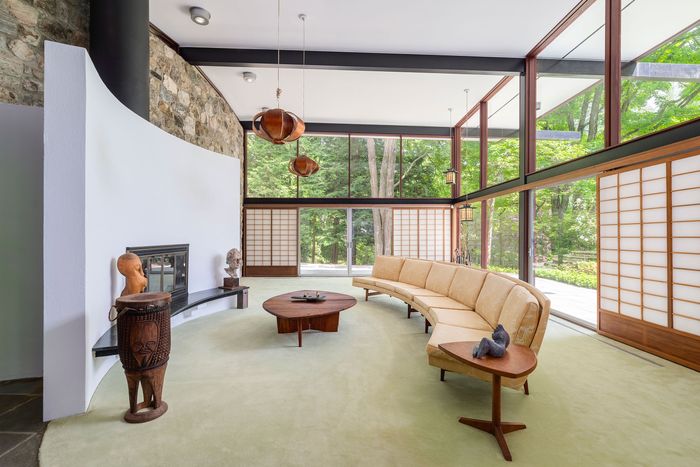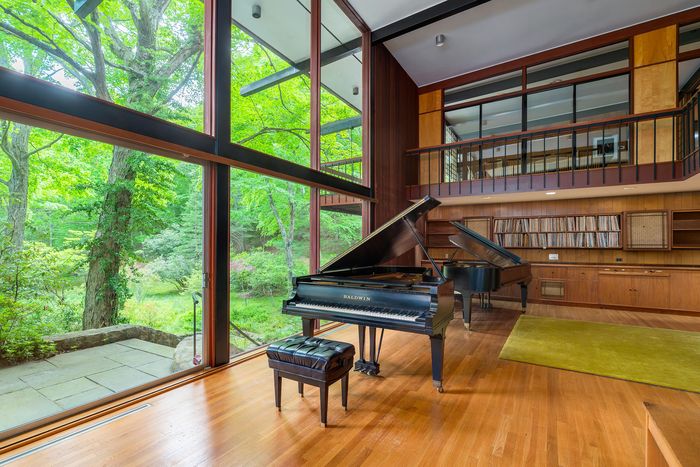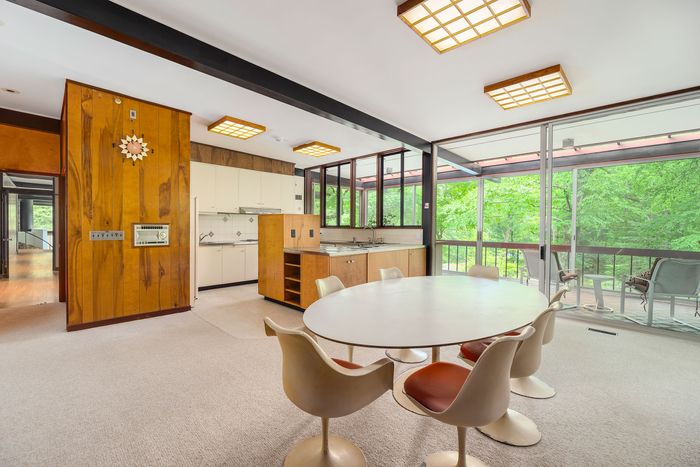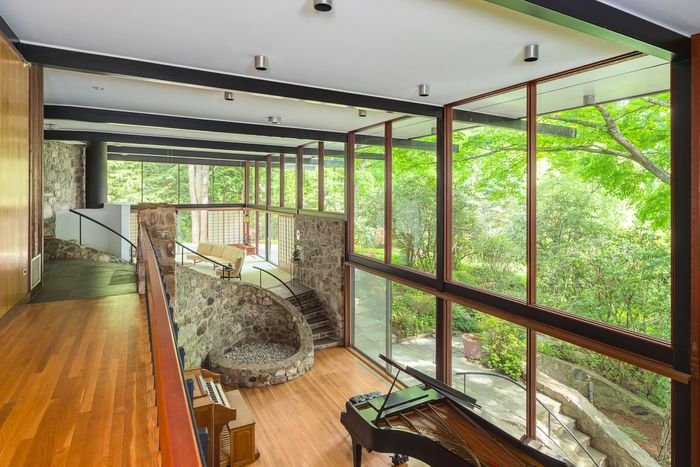
In 1954, Dave Brubeck — “Cool Jazz” icon and noted architecture obsessive — hired architect Beverley David Thorne to design a steel-framed cantilevering house in Oakland. But Brubeck’s East Coast touring schedule didn’t leave a lot of time for him to enjoy his California “house in the sky.” So, in 1961, he and his wife Iola bought 7.5 acres of steep forested land in Wilton, Connecticut.
Brubeck chose Thorne for his experience building on unusual, tricky terrain — his portfolio also includes the Bay Area Case Study House that hangs over a slope with a giant rear deck. According to Chris Brubeck, one of Dave Brubeck’s six children, Thorne’s Connecticut design was like Brubeck’s Oakland house “on steroids” — with an unassuming facade built for seclusion. “There’s not one window that faces the street,” he says, “making the home completely private. But when you walk in, there are two stories of glass that explode out onto the garden view.”
The Japanese influence was a decision Thorne and Brubeck came to together. For his part, Brubeck traveled the world as a U.S. State Department–sanctioned “Jazz Ambassador” in the late 1950s and later recorded several albums — including Jazz Impressions of Japan — influenced by his experiences abroad. Finding inspiration in traditional Japanese architecture, Thorne wanted the house to mesh with the surrounding land, not combat it. The rooms look out onto zen gardens, a waterfall, and a pond with a fountain and bright red bridge.
Both Thorne and Brubeck were modernists. Natural stone and wood paneling is everywhere, and a curved stone staircase descends from the kitchen and dining room to a living room with original furniture and light fixtures. Another half-level down is Brubeck’s music studio with 20-foot ceilings, custom built-ins, and a clerestory wall. The shoji screens in the great room were added ten years after the couple moved in. “We used to have these unbelievably tall drapes in there, which didn’t make much sense,” says Chris Brubeck.
Call it the Frank Lloyd Wright effect, but, like so many other mid-century homes built by famous architects, the house feels almost like it has been frozen in time. This feeling may be, in part, because the estate went to the Brubeck children after the musician passed away in 2012, and the family has barely touched the place. There have been no halfhearted attempts to refinish the home in gray paint or shiplap. Instead, the kitchen and bathrooms are painted in oranges and blues reminiscent of the 1960s, and the music room still has three of Brubeck’s pianos and an organ (the instruments, unfortunately, don’t come with the house).











